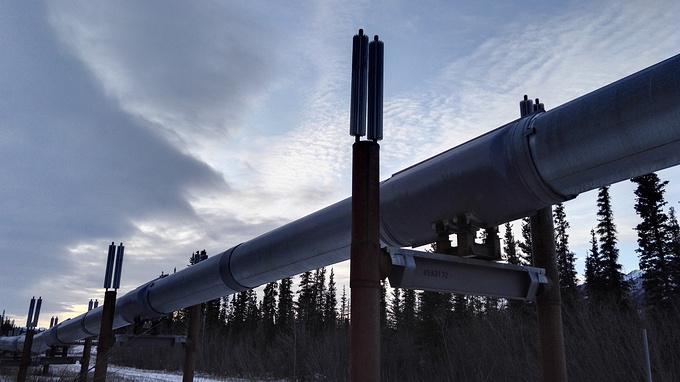Article Archive
Article Archive
- Introduction of Cement Slurry System (Part 1)
- Introduction of Cement Slurry System (Part 2)
- Introduction of Cement Slurry System (Part 3)
- Introduction of Cement Slurry System (Part 4)
- High Temperature and High Pressure Cementing Technology
- Low Density Cementing Slurry Technology
- Anti Gas Channeling Cementing Technology
- Drag Reducing Agents (DRA) or Drag Reducers (DR)
- Nitrogen Surfactant Compound Huff and Puff Technology
- Oil Washing Technology for Increasing Production
2. Method
This study was done by conducting laboratory experiment using flow loop system. The flow loop system was tested using water to determine turbulence phenomenon.
2.1 Drag Reduction
Drag reduction is a phenomenon in which the turbulence of flow inside pipeline significantly decreased as the effect of addition of small amount of additives. Drag reduction can result on reduction of pressure drop along pipeline system and at a time also reduce energy requirement for fluid flow. There are formulas to measure drag reduction perceived by fluid flow as presented in Equation (1) and Equation (2).
Percent of Drag reduction (%DR):
.png)
Throughput Increase (%TI):
.png)
Percent of drag reduction indicated the performance of DRA, but do not reflect the output of the pipeline as it is calculated by %TI. Studies that have been done in the past concluded that drag reduction only happen in turbulence flow region because there was no significant change in pressure drop observed in laminar flow region. Hoyt (1989) also observed that drag reduction have maximum value which is when additional concentration of additive no longer resulting increase in percent of drag reduction.
2.2 Type and Mechanism of DRA
There are three major type of drag reducing agent that frequently used in pipeline transportation system, which included;
• Polymer based DRA
• Surfactant based DRA
• Nanofluid
Other than those, some additive also observed to have drag reducing properties such as fibers, micro bubbles, and compliant coating. Each type of DRA has different mechanism in reducing drag within the pipeline system. Although still effectively established, drag reducing agents are believed to work in some manner such as turbulence suppression, extension of laminar range limit to higher Reynolds Number, near wall flow modification, and friction reduction in fully developed turbulence flow. Polymer additives that used as drag reducing agent must be in a form of a long-chained polymer which has heavy molecular weight. The polymer chain in fluid flow dampens the forming of eddie current and as the result turbulence is greatly reduced.
Surfactant additives work by forming bilayer sheet micelle. Hydrophobic part of micelle avoids contacts with polar molecule of crude oil. On the other hand, hydrophilic part of micelle contacts with polar molecule allowing the hydrophobic part of micelle to concentrate in the center of bilayer micelle formation. Micelle function in similar manner as polymer chain that dampens the formation of eddie current in fluid flow.
Nanofluid is a relatively new additive used as drag reducer. Nanofluid is believed to work in different way with polymer and surfactant additives. Nanofluid, such as Nano-SiO 2 , work by filling the crevices of pipe wall resulting reduction of pipe relative roughness.
2.3 Drag Reduction using Polymer
Polymer works as drag reducing agent by dampening the formation of Eddie current so turbulence can be highly
reduced, as concluded by several researchers. It has also observed that polymer performance affected by several
factors, such as: effect of concentration, channel size and geometry, molecular weight, chain flexibility, and flow
rate.
2.3.1 Effect of Concentration
Concentration was observed proportionally related with drag reduction until maximum drag reduction is reached. This happens due to the concentration of additives increase more chains of polymer and dampening the formation of eddies current. Maximum value of drag reduction is reached when addition of polymer concentration no longer increase performance of drag reduction or even reduce the performance.
2.3.2 Effect of Channel Size and Geometry
Effect of channel size is still in controversy, different researcher provided different answer with different logical and scientific explanation. Karami and Mowla (2012) investigated that drag reduction decrease as diameter of channel increase. The explanation for this is that pipe with smaller diameter has larger degree of turbulence (e/D)
due to larger relative roughness (e/D) compared to pipe with larger diameter. Higher degree of turbulence means that addition of polymer will result on higher decrease of pressure drop thus the effect of drag reduction is more significant.
In terms of channel geometry, some researches concluded that the effect of drag reduction is more prominent in straight pipe rather than in curved pipe. It has also been observed that radius of curvature of the pipe has significantly effect on delaying the onset of drag reduction and reducing the impact of drag reducing agent applied.
Radius of curvature also reduces maximum drag reduction that can be achieved by polymer application.
2.3.3 Effect of Molecular Weight
General understanding based on results of some research concluded that drag reduction increased by increasing molecular weight, heavier polymer potentially has better ability to absorb and prevent formation of Eddie current that composed turbulence.
2.3.4 Effect of Chain Flexibility
Flexibility of polymer chain is attributed to its ability to reduce drag. Flexible chain will serve as better cushion to absorb and dampen the formation of turbulence flow by reducing Eddie current generation.
2.3.5 Effect of Chain Flow rate
Flow rate of fluids in pipeline is directly related or Reynold number (Re) of fluid flow. Increasing flow rate means increase in degree of turbulence, allowing drag reducer to produce bigger margin of drag reduction. Mowla and Naderi (2008) studied the effect of polymer concentration on the percentage of drag reducer effectiveness for four types of drag reducer agent.




